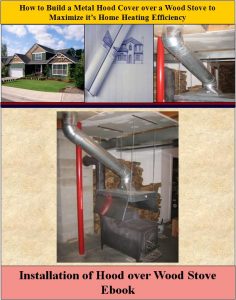The Benefits of Wood Burning Stoves and the Selection and Preparation of Wood
By Mark J. Donovan
|
|
There are a number of supplemental heating solutions that can help heat your home during the winter months, however the traditional wood burning stove is still the most popular choice for many. Wood burning wood stoves offer a number advantages over other supplemental heating stoves, including gas stoves, pellet stoves, coal stoves, and portable electrical heaters.
One of the main advantages of a wood burning stove is the fact that wood is still a relatively plentiful resource in many regions of the world, and thus is fairly economical to burn compared to natural gas, propane, electric, and wood pellets. |
Also, unlike a wood pellet stove where the pellets are manufactured and have to be purchased from a store, a traditional wood stove allows a homeowner to cut and prepare the fire wood him or herself. Consequently the cost of burning wood in a wood stove is typically much less expensive than burning any other type of combustible material in another type of stove.
When it comes to selecting what type of wood to burn in a wood stove, hardwoods are the preferred choice. Oak and maple are two of the best types of wood to burn in a wood stove. Softwoods, such as pine, which are filled with pitch, should never be used. Burning pine wood in a wood stove can lead to high levels of creosote buildup in the chimney and wood stove pipe, which can cause chimney fires. Many homes are burnt down every year due to chimney fires, caused by wood stoves burning improper types of wood and/or the chimney not being regularly cleaned.
Consequently, prior to burning wood in a wood stove it should be properly cut and split and allowed to dry out for at least 6 to 9 months, and preferably a year. By allowing the wood to age and dry out, the wood should be able to get to a moisture content below 20%, which is ideal for burning, both from a BTU output level and a safety standpoint.
To aid in the drying process the wood should be cut to proper length, split and then stacked in a sunny area. Typically the wood is stacked in an organized manner, either in round house piles or long rows. The wood should also be covered during the drying cycle to prevent rain, snow and ice to collect on it.
For information on Restoring Baseboard Heating Element Covers, see the Restoring Baseboard Heating Element Covers eBook from HomeAdditionPlus.com. The Restoring Baseboard Heating Element Covers Ebook provides easy to understand, step-by-step instructions, on how to restore Baseboard Heating Element Covers so that they look new again. Pictures are included for every key step in the process.
For information on how to maximize a wood stove’s heating efficiency, see HomeAdditionPlus.com’s Installation of Hood over Wood Stove eBook.
For information on how to clean a wood stove pipe, see HomeAdditionPlus.com’s How to Clean a Wood Stove Pipe eBook.
Related Information
Additional Heating and Cooling Resources from Amazon.com
 |
 |
Free Heating and Cooling Price Quotes with No Obligation!
Fill out our 3-5 minute quick and easy form, and receive a free price quote on heating & cooling from one of our pre-screened and licensed HVAC contractors. This process is free and there is no obligation to continue once you receive your heating & cooling price estimate.


